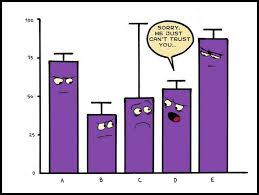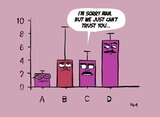environmental systems and societies assessments
IA Overview
The most important aspect of the environmental systems and societies course is hands-on work in the laboratory and/or out in the field. The syllabus not only directly requires the use of field techniques, but many components can only be covered effectively through this approach. Practical work in this subject is an opportunity to gain and develop skills and techniques beyond the requirements of the assessment model and should be fully integrated with the teaching of the course.
The purpose of the internal assessment investigation is to focus on a particular aspect of an ESS issue and to apply the results to a broader environmental and/or societal context. The investigation is recorded as a written report. The report should be between 1500 and 2250 words. This does not include titles, annotations on images and graphs, bibliography. Data (qualitative and quantitative) is not included but variable tables or error analysis tables do count. You should be made aware that external moderators will not read beyond 2,250 words and I will only mark up to this limit.
The internal assessment investigation consists of:
Your work is internally assessed by the teacher and externally moderated by the IB. The performance in
internal assessment is marked against common assessment criteria, with a total mark out of 24.
The most important aspect of the environmental systems and societies course is hands-on work in the laboratory and/or out in the field. The syllabus not only directly requires the use of field techniques, but many components can only be covered effectively through this approach. Practical work in this subject is an opportunity to gain and develop skills and techniques beyond the requirements of the assessment model and should be fully integrated with the teaching of the course.
The purpose of the internal assessment investigation is to focus on a particular aspect of an ESS issue and to apply the results to a broader environmental and/or societal context. The investigation is recorded as a written report. The report should be between 1500 and 2250 words. This does not include titles, annotations on images and graphs, bibliography. Data (qualitative and quantitative) is not included but variable tables or error analysis tables do count. You should be made aware that external moderators will not read beyond 2,250 words and I will only mark up to this limit.
The internal assessment investigation consists of:
- identifying an ESS issue and focusing on one of its specific aspects
- developing methodologies to generate data that are analyzed to produce knowledge and understanding of this focused aspect
- applying the outcomes of the focused investigation to provide understanding or solutions in the broader ESS context.
Your work is internally assessed by the teacher and externally moderated by the IB. The performance in
internal assessment is marked against common assessment criteria, with a total mark out of 24.
IA component
- Duration: 10 hours
- Weighting: 25%
- Individual investigation.
- This investigation covers assessment objectives 1, 2, 3 and 4.
IA criteria
The new assessment model uses five criteria to assess the final report of the individual investigation with the following raw marks and weightings assigned:
The new assessment model uses five criteria to assess the final report of the individual investigation with the following raw marks and weightings assigned:
Click on the links above to get more detailed information about the assessment
Ideas for ESS IA
Selecting a suitable Internal Assessment is just as important as the Internal Assessment itself.
Here is a listing of examples. The titles below are general, to give you a sense of direction, but they are not sufficiently specific to serve as a research question. You will have to modify the title to make it more specific and focused. In most cases, this will involve indicating the variable(s) chosen for investigation.
- Be certain that your question is as clear and specific as possible.
- Avoid general terms, and refer to the specific independent (manipulated) and dependent (responding) variables you will be testing.
- Be specific about the direction and magnitude of the change you expect to observe in the dependent variable as a result of changes you make in the level of the independent variable.
Here is a listing of examples. The titles below are general, to give you a sense of direction, but they are not sufficiently specific to serve as a research question. You will have to modify the title to make it more specific and focused. In most cases, this will involve indicating the variable(s) chosen for investigation.
- Distance from a highway affecting the growth of lichen
- Importance of maintaining a healthy length grass.
- New York City's COVID-19 Shelter-In-Place Policy effect on CO2 emissions
- Construction of a new school multi-purpose building effect on the local ecosystems
- Evaluation of carbon emission policies
- Impact of development in Albuquerque, NM on the Rio Grande silvery minnow
- Impact of the United States Border Wall on the migration of desert bighorn sheep
- Agricultural fertilizers effect on the biodiversity of stream macroinvertebrates
- Impact of a person’s income on the size of their ecological footprint
- Can GDP be a signifier of a country’s birth and death rate?
- Evaluation of pesticide use effects on species diversity
- Irrigation practices in Arizona and California affect the salinization rates in agricultural cropland
- Acid rain affects on forests in Brazil
- Role of gender in energy usage
- Impact of washing the dishes in the sink affect water footprint
- Impact of anthropogenic litter affect amphibian communities in Mill and Nancy Creek
- Recyclable materials degradation in a landfill
- Does age groups affect the environmental philosophies of individuals
- Impact of deforestation on the rate of erosion
- What role does wealth play in the differences between the ecological footprint of a household of lower income area opposed to an upper middle class household in a city like Los Angeles?
- Economic development effect on carbon emissions/acid rain
- Reducing methane production in beef production systems
- Evaluation of school recycling program
- Impact of climate change on wildfires in California
- Vegan only Tuesday in School Cafeteria
- Use a sampling method to quantify the pattern and measure changes in an abiotic factor that is considered responsible for the gradient.
- How does the amount of traffic affect tropospheric ozone
Below, are several exemplar IA's to help you with writing your own.
I would recommend starting with the investigation 1. Next read the annotated copy then the moderator comments
I would recommend starting with the investigation 1. Next read the annotated copy then the moderator comments
Important Points
A perfect score would be 42. IBCA adjusts actual marks to reflect the 25% weighting
Your laboratory work and report write-ups will be assessed (that means ‘graded’) using very strict IB criteria. All IB science teachers world-wide must use the same criteria and apply them in the same way—quite a challenge!! To ensure that everyone is following the rules and applying the criteria correctly, schools must send samples of graded student lab reports to IB for monitoring. If a teacher is being too hard or too soft, that teacher’s marks which were awarded to students will be adjusted accordingly.
All IA (Lab) assignments are to be typed and submitted electronically through ManageBac on or before the assignments due date. Please note IA submissions are to be submitted by 12AM - no exceptions. For this reason it is recommended IA assignments be submitted a day early so that any problems can be discussed BEFORE the due date and time occur.
I will decide if your research topic is like another research topic. You must get approval of your topic directly from me before you run the experiment.
A perfect score would be 42. IBCA adjusts actual marks to reflect the 25% weighting
Your laboratory work and report write-ups will be assessed (that means ‘graded’) using very strict IB criteria. All IB science teachers world-wide must use the same criteria and apply them in the same way—quite a challenge!! To ensure that everyone is following the rules and applying the criteria correctly, schools must send samples of graded student lab reports to IB for monitoring. If a teacher is being too hard or too soft, that teacher’s marks which were awarded to students will be adjusted accordingly.
All IA (Lab) assignments are to be typed and submitted electronically through ManageBac on or before the assignments due date. Please note IA submissions are to be submitted by 12AM - no exceptions. For this reason it is recommended IA assignments be submitted a day early so that any problems can be discussed BEFORE the due date and time occur.
I will decide if your research topic is like another research topic. You must get approval of your topic directly from me before you run the experiment.
LAB WRITE
LabWrite is an online tool to help structure good-quality write-ups. Work through the steps of a lab report using this resource and check your report against the checklist and rubrics above. Does it help you work towards those ‘complete’ marks?
LabWrite is an online tool to help structure good-quality write-ups. Work through the steps of a lab report using this resource and check your report against the checklist and rubrics above. Does it help you work towards those ‘complete’ marks?
The following links are from BiologyForLife. These are based on IB Biology Internal Assessment criteria. However, they are very applicable to Environmental Systems and Societies. Please feel free to use these as a guide for your Internal Assessment
This is a great review if you are still struggling. This video is from a series guiding you through the IB Environmental Systems and Societies Internal Assessment from Science Sauce
This is out of order but great to understand the structure of your report.
This is geared for Biology but very helpful for ESS














